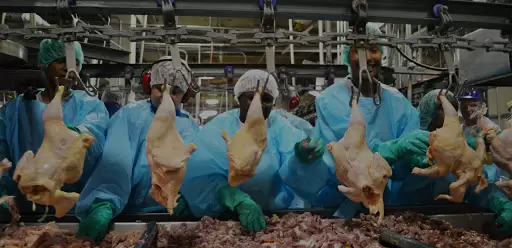Meat and poultry workers in the center of a global coronavirus hotspot

Despite U.S. President Trump’s April 28 executive order requiring meat plants to remain open, 47 meat and poultry plants were temporarily closed as of May 11 due to the rapid spread of worker infections. Confirmed COVID-19 cases jumped 40% in the week after the executive order in U.S. counties with major beef or pork slaughterhouses, compared with a 19% rise nationally. At least 30 meat workers have died and thousands have been infected.
Two meatpacking plants in Alberta, Canada, have given rise to nearly one in six of the province’s 3,400 cases of COVID-19.
The North American meat industry, with its giant plants concentrating thousands of workers and intense line speeds, has generated particular scrutiny in the current public health emergency, but the susceptibility of meat and poultry processing facilities to the rapid spread of viral infection is a global phenomenon. Significant outbreaks have occurred at meatpacking facilities in Australia, Brazil, France, Germany, Ireland and Spain, and continue to spread.
The coronavirus that causes COVID-19 quickly spreads from worker to worker because the pressure of the line speeds requires workers to stand in close proximity.
To mitigate the spread of the virus and to save lives, slaughter and processing lines must be slowed to enable physical distancing, and meat workers must be provided with the highest level of protective equipment. Strict monitoring of safety procedures must be constantly enforced by labour inspectors. Mandatory daily testing and contact tracing are essential measures for combatting the spread of the virus among workers and in their communities.
IUF affiliates are insisting on stronger safety measures and full income protection for those infected, quarantined or laid off.